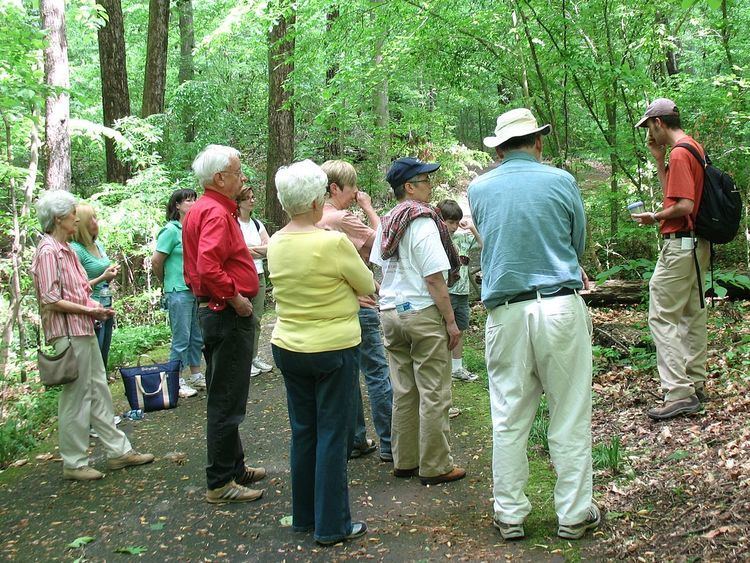Website www.fernbankmuseum.org Phone +1 404-929-6300 | Area 26 ha | |
 | ||
Established 1937; 80 years ago (1937) Ecosystem(s) Old-Growth Urban Forest Hours Closed now Friday10AM–5PMSaturday10AM–5PMSunday10AM–5PMMonday10AM–5PMTuesday10AM–5PMWednesday10AM–5PMThursday10AM–5PM Similar Fernbank Museum of Natural H, Fernbank Science Center, Carnegie Education Pavilion, Five Points Plaza, Park Avenue Condominiums | ||
Wildwoods and fernbank forest now open
Fernbank Forest is a 65-acre (25 hectares) mature mixed forest that is part of Fernbank Museum of Natural History in Atlanta, Georgia. It has one of the few remnants of original forest vegetation in the Georgia Piedmont; as such, it has been extensively studied by scientists. Large specimens of white oak and tulip poplar, which grow up to 156 feet (47.5 meters) tall, dominate the tree canopy. There also are a few equally tall loblolly pine. Other canopy species include American beech, black oak, northern red oak, southern red oak, pignut hickory, bitternut hickory, mockernut hickory, winged elm and red maple. Eastern flowering dogwood, sourwood, umbrella magnolia and eastern redbud are prominent among the smaller trees. The forest floor is covered by many shrub, wildflower, and fern species.
Contents
- Wildwoods and fernbank forest now open
- Fernbank forest hike w eli dickerson part 1 of 6
- History
- Controversy 2012 2014
- References
Common animals include raccoon, opossum, gray squirrel, chipmunk, American crow, pileated woodpecker, box turtle and several snake species, including the venomous copperhead.
The soils are mostly well-drained, with medium brown or dark reddish brown sandy loam topsoils. The subsoils are clay loam or clay; they are medium red or dark red. The darker soils, which support higher plant diversity, have developed on mafic rock; the medium-toned soils are on felsic rock.
Fernbank forest hike w eli dickerson part 1 of 6
History
Fernbank Forest was purchased from Col. Z. D. Harrison in 1939 by a group of citizens who organized Fernbank, Inc., which today operates as Fernbank Museum of Natural History for the conservation and preservation of this old-growth forest to inspire and teach about nature. Fernbank is the 4th oldest environmental conservation not-for-profit in the United States. In 1964 the Fernbank Trustees developed a 48-year lease which was accepted by the DeKalb County Board of Education, agreeing to manage and maintain the forest in exchange for offering free access to the public. The lease was renewable in eight-year intervals for a maximum of 48 years.
Controversy 2012 - 2014
The transfer of the lease from Dekalb County School System in 2012 led the closing of the forest and subsequent controversy. Self-guided tours are not allowed and only museum members are not charged entrance fees to the forest. Forest walks for both members and non-members occur infrequently. A Move-On petition has garnered over 500 signatures to allow public access to the Forest. Concerned community members claim the forest is not being maintained and has led to the reduction of educational opportunities in the forest for local school children. Community members are concerned on the lack of transparency since none of the plans have been made public.
